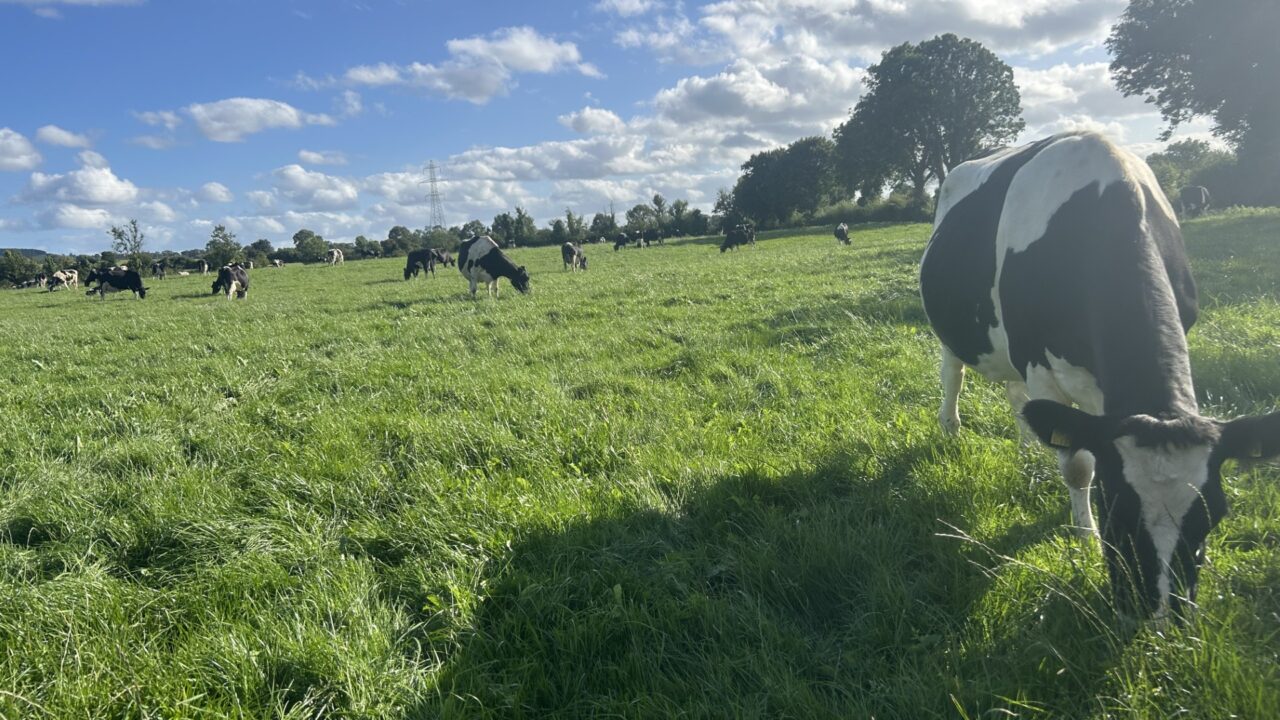Autumn grassland management and grazing targets are important for building grass for spring 2026.
We are still only in early August and it does seem daft to be talking about spring 2026 and building autumn farm covers, especially when grass growth is flying and conditions for grazing remain close to perfect.
However, we saw that the back-end of last year proved to be very favourable for farmers with many staying grazing into December, which left poor opening farm covers for the spring of 2025.
While the spring started out very dry, grass growth took a while to kick off which meant that many farms with poor opening covers struggled to maximise intakes with grass in the diet.
Again, people will argue that we should stay grazing cows when conditions allow, which is a fair point but a balance needs to be struck between maximising days at grass and building covers for spring as grazed grass in spring is far more valuable than autumn grazed grass.
Farmers have to remember that relying solely on growth over the winter to build sufficient covers does not work unless sufficient covers are left in the first place.
How to manage grass in autumn
Depending on the stocking rate of the farm, an average closing farm cover of between 550-700kg dry matter (DM)/ha will be needed come the end of November this year.
In order to achieve an opening farm cover of 1,000kg DM/ha in the spring, farmers need to start building covers from mid-August.
The rotation length is going to be key to building these covers as farmers should aim to be at a 35-day rotation length by mid-September.
Farm cover should peak at this period, with a target of 1,200kg DM/ha on farms stocked over 3.5 cows/ha and 1,000kg DM/ha on farms stocked at 2.5 cows/ha.
Autumn grass targets for a farm stocked at 2.5LU/ha is as follows:
Date
Average Farm cover (AFC)
(kg DM/ha)Cover/cow
Rotation length
September 1
750
300
30 days
Mid-september
1,100
450
35 days
October 1
1,000
400
40 days
The last rotation should commence between early to mid-October, depending on growth rates, and should last for about 40 days.
The rotation length should be extended by two days per week, starting from 25 days in mid-to-late August up to a maximum of 40 days by October 1.
Blanket spread the last application of nitrogen (N) by mid-to-late August to support grass growth as chemical N applied in August will give a better response than that applied in mid-September.
Farmers should aim to spread about 30 units/acre of N in August but need to keep an eye on their fertiliser allowance. Half rate N or dairy washings should be used on grass clover paddocks.
There are different ways to extend your grazing rotation, including:
- Reduce your stocking rate so only milking cows are on the milking platform;
- Move on your cows that are for culling;
- Apply fertiliser and slurry to maintain grass growth, aiming for around 25-30 units of N/ac in August;
- Graze your paddocks clean and do not poach or damage them;
- Feed extra ration or high-quality baled silage to reduce demand.
Grass growth can often pick up at the end of August and into September, so if covers are getting too strong, farmers need to reduce the amount of meal in the diet while being careful of dropping it below 2-3kg/cow when it comes to grass tetany.
Farmers could also increase their stocking rate for a short time by adding dry stock onto the milking platform or they can continue cutting for surplus bales – this needs to be done as early as possible to ensure regrowth.
The use of the strip wire or temporary fencing is also an option in the final round of grazing as it will slow up the rotation while ensuring cows are achieving optimal clean outs.
Autumn time is different to summer growth as decisions will have to be made quicker to ensure the grass growth comes back and to ensure you are not hindering covers for spring grazing.

